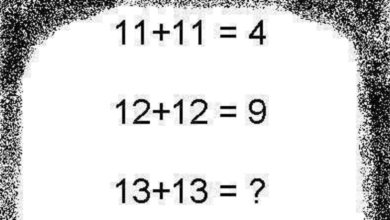LCA set to emerge as cornerstone of IAF’s combat power

The light combat aircraft (LCA) is set to emerge as the cornerstone of the Indian Air Force’s combat power in the coming decade and beyond, with the air force counting on the indigenous fighter jet to shore up its capabilities at a time it is grappling with a durbing decline in the number of its fighter squadrons, officials tracking the IAF’s modernisation said on Wednesday. PREMIUM In a first, the LCA on August 23 fired the indigenous Astra beyond visual range (BVR) air-to-air missile off the coast of Goa.(Defence minry) The IAF, the world’s fourth largest air force, is expected to operate more than 350 LCAs (Mk-1, Mk-1A and Mk-2 versions), with a third of those already ordered, some inducted, and the rest figuring prominently on the air force’s modernisation roadmap and expected to be contracted in the coming years, the officials said, asking not to be named. The newer variants of LCA — Mk-1A and Mk-2 — will come with significantly improved features and technologies over the Mk-1 aircraft that have already been inducted IAF. The indigenous content in the fighter jets will also progressively increase. The IAF’s leadership, including its chief Air Chief Marshal VR Chaudhari, is firmly backing the LCA programme. In a recent review of the LCA programme, Chaudhari described the fighter aircraft as the flag-bearer of the IAF’s efforts towards the indigenisation of its combat fleet. The LCA is one of the most significant achievements on the indigenisation front both technologically and capability-wise, said former IAF chief Air Chief Marshal RKS Bhadauria. It brings into the domestic aviation industry state-of-the-art aerospace technologies, design and development of the platform, sensors, weapons and overall ability to integrate and network, he said. “The LCA provides a robust base for developing critical future fighter programmes, including the advanced medium combat aircraft (AMCA) and unmanned combat aerial vehicles,” Bhadauria, who served as the IAF chief during 2019-2021, added. (AMCA is India’s futuric stealth fighter). What is the status of LCA ordersThe IAF has so far ordered 123 LCAs, 40 Mk-1s and 83 Mk-1As, to boost its combat potential. The Mk-1s are in the initial operational clearance (IOC) and the more advanced final operational clearance (FOC) configurations. Of the 40 LCA Mk-1 planes, 32 aircraft have already been delivered to the air force state-run plane maker Hindustan Aeronautics Limited (HAL), and the remaining eight twin-seater trainers will be delivered in the coming months. In February 2021, the defence minry awarded a ₹48,000-crore contract to HAL for 83 LCA Mk-1A jets for IAF. The first Mk-1A aircraft is expected to be delivered to the air force March 2024, with the rest slated to join its combat fleet 2029. Timely deliveries of the aircraft will be crucial, experts said. The IAF is exploring the possibility of ordering more variants of the Mk-1A — a proposal to place a follow-on order for 90 to 100 more fighter jets is on the drawing board. If the order materialises, it will provide a big boost to the Atmanirbhar Bharat (self-reliant India) campaign. The LCA Mk-1A will come with a raft of additional improvements over the exing Mk-1 variant. India is also looking at building around 130 LCA Mk-2s, which will form an important element of the IAF’s future combat capabilities. Last year, the government gave its nod for developing the LCA Mk-2, and sanctioned ₹10,000 crore for the project. The world’s leading aircraft engine maker GE Aerospace and HAL signed a memorandum of understanding (MoU) in Washington in June to produce the F-414 engines in the country for the LCA Mk-2, during Prime Miner Narendra Modi’s first state visit to the US. The F-414 has evolved from the F-404 engine that powers the exing LCA variants — Mk-1 and Mk-1A. The production of the engines in India will result in the new fighter jet having an indigenous content of around 75% compared to 55%-60% in LCA Mk-1A and 50% in the exing Mk-1 variant. The Mk-2 fighter will be the most advanced LCA variant to be designed and developed indigenously. It is now up to the HAL and government to vindicate the trust the IAF has reposed in the LCA programme to promote self-reliance in the defence manufacturing sector, said Air Vice Marshal Anil Golani (retd), additional director general, Centre for Air Power Studies. “The emphasis should now be on ramping up the production capability so that the IAF’s needs are met in time,” he added. To be sure, in April, HAL launched a third LCA production line in Nashik to ramp up the production of the fighter aircraft from the current 16 to 24 in anticipation of more orders. The other two production lines are in Bengaluru. Which fighter jets will LCA variants replaceThe LCA project was sanctioned in 1983 as a replacement for the Soviet-origin MiG-21 fighter fleet. The IAF raised its first LCA squadron with two aircraft in July 2016. The exing Mk-1 and Mk-1A variants will replace the IAF’s MiG-21 fighters. The IAF currently operates more than 50 MiG-21 Bison aircraft (three squadrons), the latest and the last variant of the MiG-21. The IAF is set to retire these squadrons 2025. The IAF got its first MiG-21 in 1963 and it progressively inducted 874 jets (different variants of the Soviet-origin supersonic fighters). More than 400 MiG-21s have been involved in accidents that have claimed the lives of 200 pilots during the last six decades. Of the 874 MiG-21s inducted, more than 60% were licence-produced in India. More MiG-21s have crashed than any other fighter because they formed the bulk of the fighter aircraft in the IAF’s combat fleet for a long time. The IAF has had to keep its MiG-21 fleet flying longer than it would have liked because of the delay in the induction of new fighters. The Mk-2 aircraft is planned as a replacement for the air force’s MiG-29s, Mirage-2000s and Jaguar fighters that will start retiring in the coming decade, the officials said. The first flight of the LCA Mk-2 fighter could take place in two years, setting the stage for its production and subsequent operational availability 2029-30, Hindustan Times has learnt. The LCA Mk-2 is expected to fill the gap between Mk-1A and the AMCA, which is being developed and should be operationally available in the 2030s, the officials said. There is a possibility of equipping AMCA with directed energy weapons, and superior anti-missile systems, and teaming it with unmanned systems. The IAF currently operates 31 fighter squadrons compared to an optimum strength of 42-plus squadrons required to fight a two-front war against China and Pakan. What capabilities will advanced LCA variants haveThe Mk-1A will come with digital radar warning receivers, external self-protection jammer pods, superior radar, advanced beyond-visual-range (BVR) air-to-air missiles and significantly improved maintainability. The LCA Mk-1A aircraft is expected to be deployed at forward bases. The LCA Mk-2 fighter will be equipped with the more powerful GE-414 engine, better avionics and electronics, and will be capable of carrying a higher weapons payload. It will have improved range, enhanced survivability, better situational awareness for pilots, network-centric capabilities, and the ability to quickly switch from one role to another. The 17.5-tonne Mk-2 fighter will have a maximum speed of 1.8 Mach, compared to the 13.5-tonne Mk-1A which has a top speed of 1.6 Mach. The new aircraft will come with a payload capacity of 6.5 tonne (compared to 3.5 tonne for the Mk-1A) and it will carry a mix of weapons including BVR air-to-air missiles, air-to-ground missiles, heavy precision-guided weapons and conventional bombs. The other features of the LCA Mk-2 include enhanced fuel capacity, unified electronic warfare suite, indigenous flight control actuators, improved digital flight control computer, better cockpit displays, infrared search and track capability to detect threats at long ranges, missile approach warning systems and countermeasure dispensing systems for self-protection.







